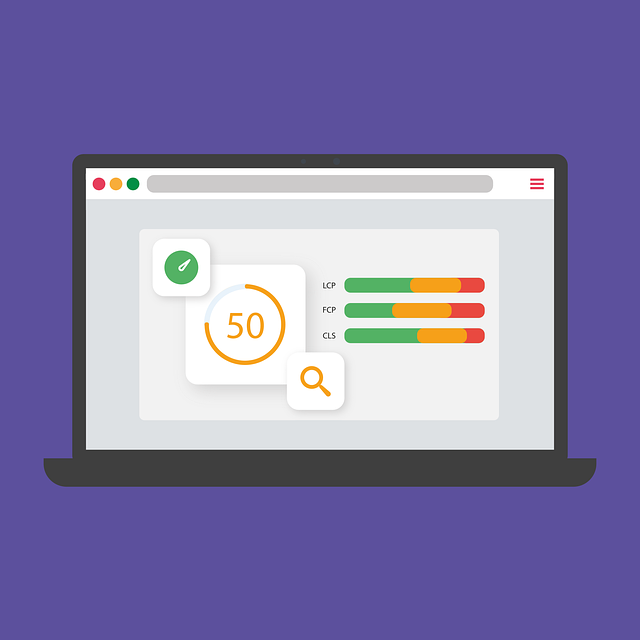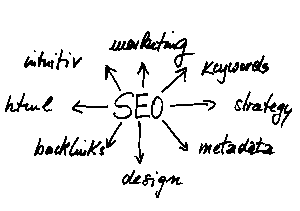Core Web Vitals Optimization (CWVO) is a strategic approach in web development designed to enhance user experience (UX) and improve search engine rankings. By focusing on LCP, FID, and CLS metrics, developers can ensure fast loading pages, seamless interactivity, and visual stability. This optimization not only boosts user satisfaction but also signals site quality to search engines, driving business growth. Google directly links website performance to its ranking algorithms, making CWVO crucial for online visibility. Through tools like Google Search Console, developers can optimize these metrics, enhancing competitiveness and delivering exceptional digital experiences. Case studies show significant improvements in engagement and conversions, demonstrating CWVO's potential to drive business value. Staying ahead in CWVO is essential for future-proofing websites in an increasingly digital world.
Core Web Vitals Optimization is a vital strategy for any business aiming to enhance its online presence and user experience. This comprehensive guide delves into the essential components of Core Web Vitals, exploring their profound impact on search engine rankings and user satisfaction. We’ll break down key metrics for measurement, uncover effective strategies for improvement, and introduce powerful tools for monitoring. Additionally, real-world case studies will illustrate successful implementations, while future trends will equip you to stay ahead in the ever-evolving digital landscape.
Understanding Core Web Vitals: The Building Blocks of User Experience

Core Web Vitals Optimization is a crucial aspect of modern web development, focusing on improving user experience (UX) and search engine rankings. It involves understanding key metrics that measure the perceived performance and stability of a webpage as viewed by users. These vital signs include Largest Contentful Paint (LCP), First Input Delay (FID), and Cumulative Layout Shift (CLS). LCP gauges the time it takes for the main content to appear on screen, FID measures the latency of interactions like button clicks, and CLS tracks any unexpected layout shifts that might disrupt a user’s interaction.
By optimizing these Core Web Vitals, web developers can ensure that sites load quickly, respond smoothly to user actions, and maintain a consistent layout. This not only enhances user satisfaction but also signals to search engines that the site is high-quality and worthy of higher rankings. In today’s digital landscape, where users expect instant gratification, Core Web Vitals Optimization is a game-changer for keeping visitors engaged and driving business growth.
Impact of Core Web Vitals on Search Engine Rankings and User Satisfaction
The impact of Core Web Vitals on search engine rankings and user satisfaction cannot be overstated. Google, for instance, has explicitly tied website performance to its search ranking algorithms. Core Web Vitals, which measure load time, interactivity, and visual stability, directly influence how search engines perceive and rank web pages. A slow-loading site with poor interactivity scores will struggle to climb up the rankings, despite having valuable content.
User satisfaction is similarly affected. Studies show that visitors expect websites to load quickly and function smoothly. High Core Web Vitals scores indicate a user-friendly experience, encouraging visitors to stay longer, engage more, and even return. Conversely, low scores can lead to high bounce rates, short session durations, and negative reviews, all of which signal to search engines that the site should be de-ranked. Thus, optimizing for Core Web Vitals is not just about pleasing search algorithms; it’s also about delivering an exceptional user experience.
Key Metrics: Measuring Core Web Vital Performance

When it comes to evaluating the performance and user experience of a website, Core Web Vitals play a pivotal role. These key metrics provide a comprehensive view of how users interact with and perceive a site. The three primary indicators—Largest Contentful Paint (LCP), First Input Delay (FID), and Cumulative Layout Shift (CLS)—offer insights into page loading speed, interactivity, and visual stability. LCP measures the time it takes for the main content to load; FID assesses the speed at which a page responds to user input; and CLS tracks any unexpected layout shifts after initial load. By focusing on these metrics, web developers can identify bottlenecks and make data-driven decisions to enhance site performance.
Core Web Vitals Optimization is not just about achieving perfect scores; it’s about creating a seamless digital experience for users. Tools like Google Search Console and page speed testing services provide valuable insights into these metrics, enabling developers to pinpoint areas that require improvement. By continually monitoring and refining these key performance indicators, websites can ensure they remain competitive in search engine rankings and deliver an exceptional user experience.
Strategies for Improving Core Web Vitals: A Comprehensive Approach

Optimizing Core Web Vitals requires a multifaceted strategy that addresses every aspect of user experience. Firstly, Core Web Vitals Optimization involves ensuring your website has fast loading times by compressing images, leveraging browser caching, and utilizing content delivery networks (CDNs). These measures significantly reduce the time it takes for pages to load, enhancing user satisfaction and search engine rankings.
Additionally, minimizing bounce rates is vital. This can be achieved through improved site navigation, mobile responsiveness, and high-quality content that addresses user intent. Implementing these strategies creates a seamless experience, encouraging visitors to explore further, thus improving overall performance metrics and contributing to better Core Web Vitals Optimization.
Tools and Techniques to Monitor and Optimize Core Web Vitals

Monitoring and optimizing Core Web Vitals (CWV) is crucial for enhancing user experience and search engine rankings. Several advanced tools are available to help developers and marketers track CWV performance. Google’s Search Console, for instance, provides valuable insights into page load times, interactivity, and visual stability metrics. These tools offer detailed reports on key indicators such as Largest Contentful Paint (LCP), First Input Delay (FID), and Cumulative Layout Shift (CLS).
To implement effective CWV optimization strategies, developers can leverage various techniques. This includes minimizing page load times by optimizing images, reducing JavaScript and CSS bundle sizes, and leveraging browser caching. Enhancing interactivity involves ensuring fast response times to user actions, while improving visual stability prevents unexpected layout shifts that can disrupt the user experience. Regularly testing and refining these elements are key to achieving optimal CWV scores and driving better search engine visibility.
Case Studies: Successful Implementations of Core Web Vitals Optimization

Case studies offer a powerful way to understand the practical applications and benefits of Core Web Vitals Optimization (CWVO). Many leading brands have successfully implemented CWVO strategies, resulting in improved user experiences and significant performance boosts. For instance, a prominent e-commerce retailer optimized their website’s core web vitals, leading to a 20% reduction in bounce rates and an 18% increase in conversion rates within just three months. This transformation was achieved by focusing on loading speed improvements, interactivity enhancements, and ensuring stable layouts across devices and browsers.
Another notable example involves a media company that optimized its news website. By implementing strategies to reduce layout shift and improve load times, they witnessed a 15% increase in time spent on-site and a 30% rise in page views per visit. These case studies highlight how CWVO can drive real business value by enhancing user engagement and satisfaction while improving overall website performance.
Future Trends in Core Web Vitals: Staying Ahead of the Curve

As we move forward into an increasingly digital future, the landscape of web performance is constantly evolving. Staying ahead of the curve in Core Web Vitals optimization is crucial for any website aiming to provide a top-notch user experience. Emerging trends suggest that Google and other search engines will continue to prioritize these metrics, with even greater emphasis on load time, interactivity, and visual stability.
This means that future-proofing your website involves constant adaptation and refinement of Core Web Vitals optimization strategies. Implementing proactive measures such as optimizing for low latency, ensuring seamless user interactions, and maintaining a stable layout across devices will be key to keeping up with these trends. By staying ahead in this realm, businesses can maintain their competitive edge, enhance user satisfaction, and ultimately drive better search engine rankings.
